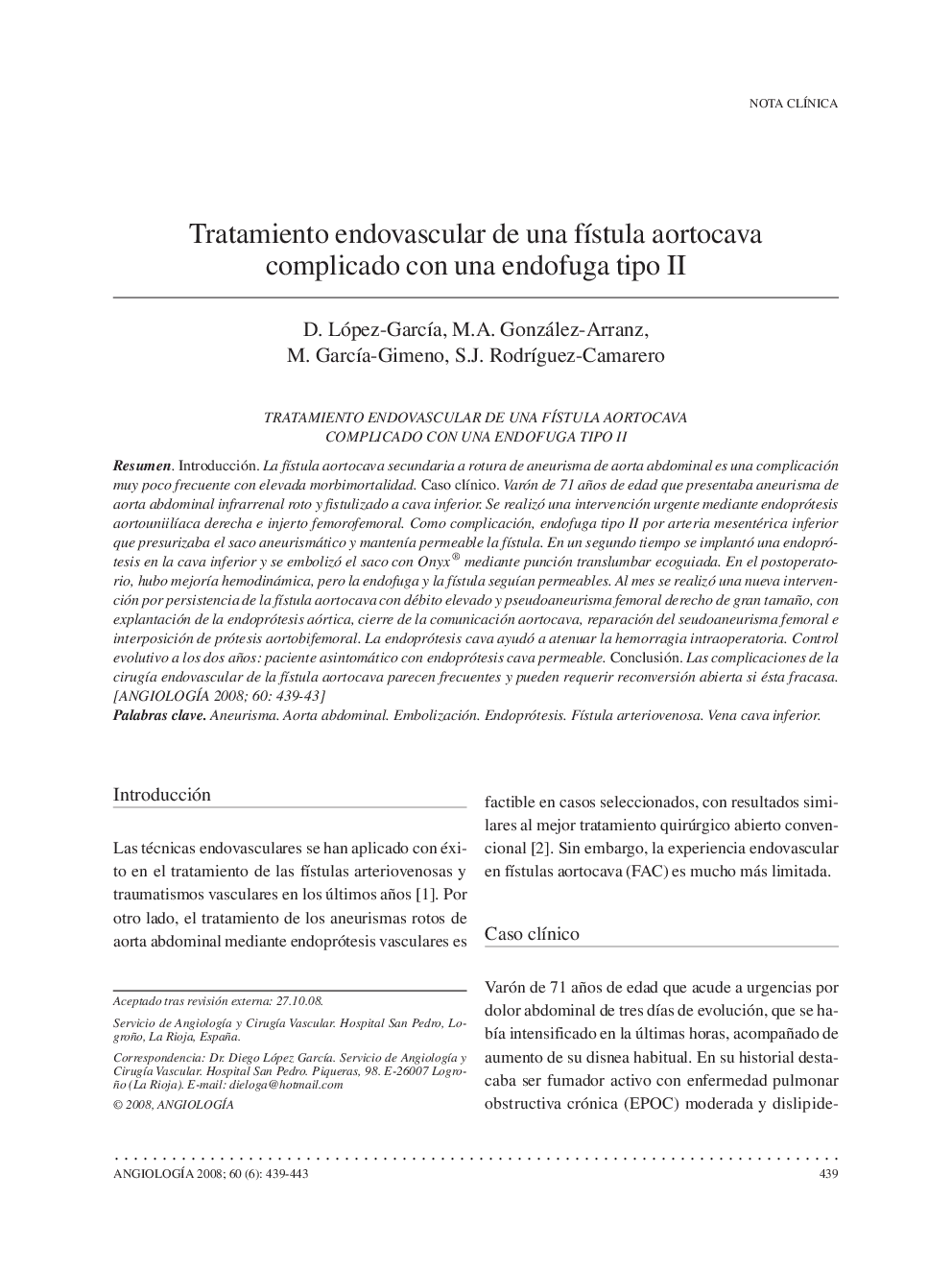| Article ID | Journal | Published Year | Pages | File Type |
|---|---|---|---|---|
| 2867927 | Angiología | 2008 | 5 Pages |
Abstract
Introduction. An aortocaval fistula secondary to rupture of an abdominal aortic aneurysm is a very rare complication with high morbidity and mortality rates. Case report. A 71-year-old male who presented an infrarenal abdominal aorta aneurysm that was ruptured and fistulised to the inferior cava. Urgent surgery was performed involving a right aortouniiliac stent and a femorofemoral graft. The situation was complicated by a type II endoleak via the inferior mesenteric artery that put pressure on the aneurysmal sac and kept the fistula patent. Later, a stent was placed in the inferior cava and the sac was embolised with Onyx ® by means of ultrasound-guided translumbar puncture. In the post-operative period a haemodynamic improvement was observed, but the endoleak and the fistula remained patent. At one month, a second operation was performed due to persistence of the aortocaval fistula with a high debit and a large right femoral pseudoaneurysm, with explantation of the aortic stent, closure of the aortocaval communication, repair of the femoral pseudo-aneurysm and placement of an aortobifemoral stent. The caval stent helped to reduce intraoperative bleeding. A control visit was carried out at two years and the patient was found to be asymptomatic and the caval stent was patent. Conclusions. Complications of endovascular surgery carried out to treat aortocaval fistulas seem to be frequent and may require open restructuring if endovascular techniques fail. [ANGIOLOGÍA 2008; 60: 439-43]
Keywords
Related Topics
Health Sciences
Medicine and Dentistry
Cardiology and Cardiovascular Medicine
Authors
D. López-GarcÃa, M.A. González-Arranz, M. GarcÃa-Gimeno, S.J. RodrÃguez-Camarero,
